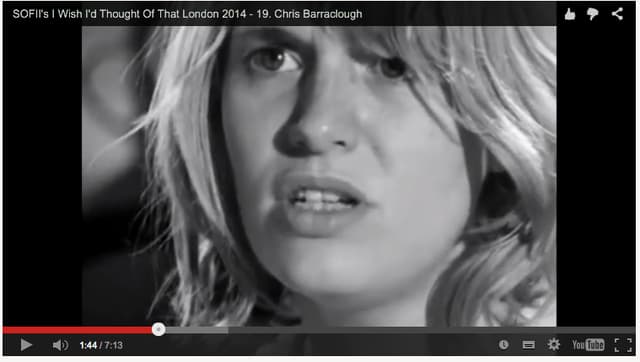BBC Television: the 1966 documentary, Cathy Come Home
- Exhibited by
- Chris Barraclough
- Added
- February 10, 2015
- Medium of Communication
- Target Audience
- Type of Charity
- Homelessness
- Country of Origin
- UK
- Date of first appearance
- 16 November 1966
SOFII’s view
Cathy's story shocked a nation and, as this case history shows, had huge impact. However, nowadays when viewing audiences are much more fragmented and there no longer seem to be any that attract the same large numbers - it had 12 million viewers, would it have the same power?
Summary / objectives
To raise awareness of families being made homeless.
Background
By the early 1960s, homelessness had grown throughout Britain but was not a problem in the public consciousness. Local Authority rules meant husbands were not included as ‘family’ for homeless purposes, so families in trouble were being split with devastating consequences.
Creator / originator
Ken Loach and Jeremy Sandford.
Special characteristics
It was shown as a dramatised TV play on BBC and watched by 12 million people.
Influence / impact
The Times described it as, ‘The most important piece of dramatised documentary ever screened.’ Twenty years later Radio Times readers’ poll voted it the best single television drama and in 2000 the BFI TV 100 poll rated it as the second best British television programme ever made. In 2005 Broadcast Magazine named it as the UK’s most influential TV programme of all time.
Costs
Unknown
Results
In the light of the public reaction to the film, and a publicity campaign that highlighted the plight of the homeless, led by William Shearman and the MP Ian Macleod, the charity Crisis was formed in 1967. By coincidence, Shelter was launched a few days after the first broadcast. St Mungo’s followed in 1969. Local Authority rules changed so that homeless fathers could stay with their wives and children in hostels.
Why do you think this exhibit merits a place on SOFII?:
Cathy Come Home did more than any other single event to turn homelessness into a major social issue and public cause.
Other relevant information
Chris Barraclough is keen to add ‘Cathy Come Home was produced without any thought to incorporating the latest mission statement, 50 pages of brand guidelines, approved wording, tone of voice architecture or any of the other navel-gazing, self-obsessed nonsenses that pre-occupy the marketing departments of so many large charities.’
Featured at SOFII's 'I Wish I'd Thought Of That' event 2014
Also in Categories
-
- Broadcast
- The SOFII history project

















